Day 72 - A rest day in the Valley
You know the way you wake up on the morning of an exam, or a flight, or any other time-critical event in your life? It's a panicked start. On normal days, your body initiates its startup functionality and your cognitive processes come online with laggard responsiveness, one eye opens before the other, sentences are mushed together unintelligible garble. These mornings however, your brain has been running background preconscious commands readying itself for all-systems-go at the flick of a switch. This morning I rose the moment the sun began to splash our tent with light with that panicked alertness. The kind that is no doubt ancestrally wired to keep us from being eaten by lions and other fearsome beasties. With a start, my eyes opened, my limbs flailed and in one uncoordinated contortion I was out of my sleeping bag liner and no longer prostrate.
Shit! The sun is up! I've gotta get in line!
While Gen lay in repose, I dashed out of the tent to the ranger post. Already a line of about 20 was waiting on the large stones and tree trunks that formed a path to the window. Weary vacationers yawned and dozed as they huddled in blankets and waited. A sign at the window in bold letters instructed:
ALL CAMPERS,
INCLUDING CHILDREN,
MUST WAIT IN LINE
(NO SPOT SAVING!)
INCLUDING CHILDREN,
MUST WAIT IN LINE
(NO SPOT SAVING!)
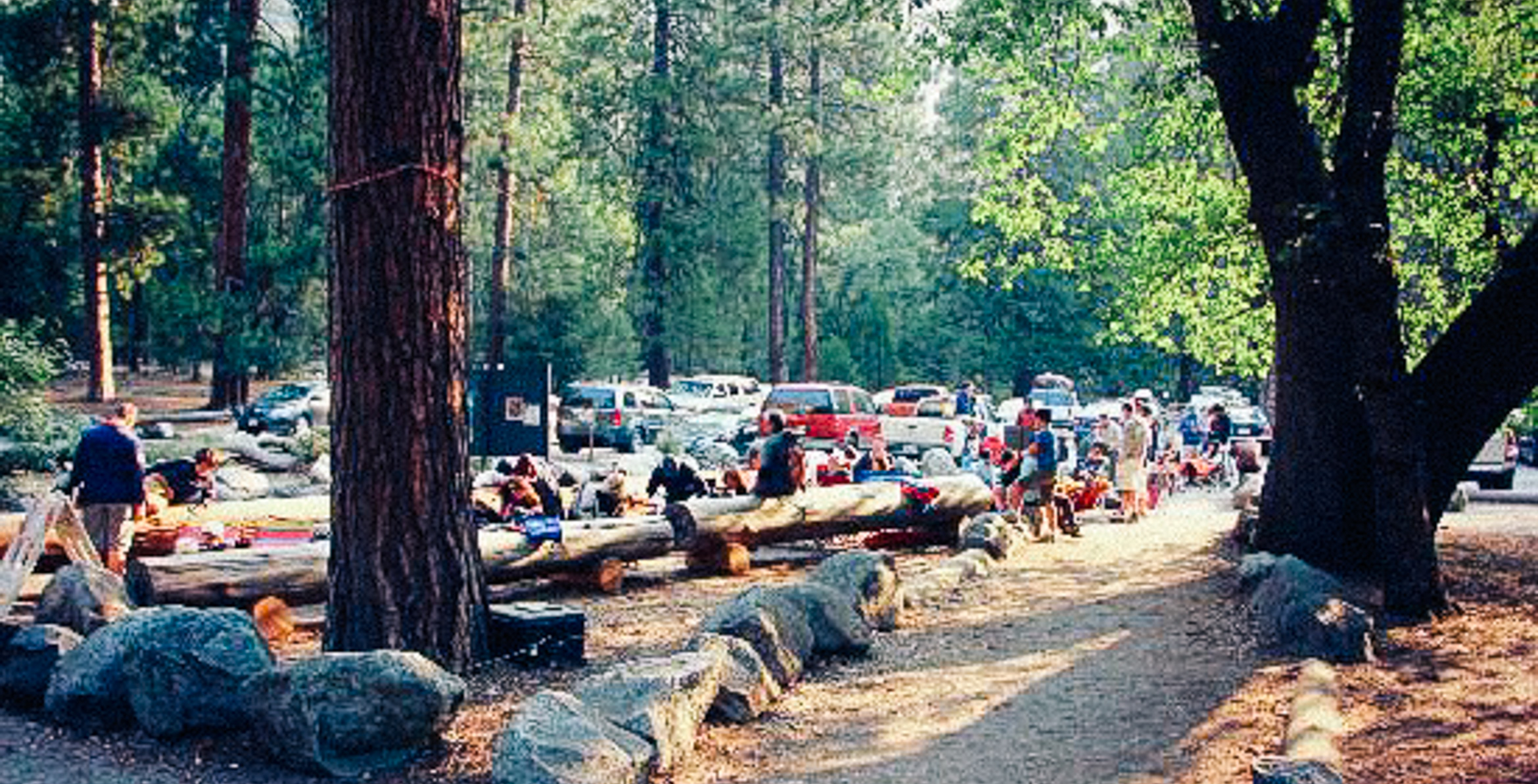
A group of 20 ahead of me comprised a single family vacation. For the life of me I cannot imagine what compelled them to choose Camp 4. By almost any measure it's one of the worst campgrounds in the park with the exception of convenience and accessibility. It is a rare exception to the policy of charging per site, Camp 4 has a flat fee of 5$ per night per camper. At 100$ a night, the family of 20 would've been much better off sleeping at Tuolumne Meadows or Tamarack Flat. Furthermore, it's loud, it's crowded, it has the worst issues with problem bears breaking into cars and rummaging through campsites. It is in many ways the last place in the park I would choose to camp if I was visiting. Yet here I was just the same. I did my mental gymnastics and excused myself from the poor choice by product of necessity. With only bicycles to travel, it was less reasonable to stay at one of the more distant campsites. That and the nearby Curry Village meant readily available food and showers.
As the clock approached 8AM I ran to the tent and told Gen she would need to join me in line so that we could reserve our site. Pinky arrived and the line bustled with activity. Entering her booth, she fetched a stack of laminated cards with numbers. Passing them out to each person in line, our spots were secured and we had a guaranteed place to sleep on the up and up. As the line shrank we approached the window and Ranger Pinky. Politely, she took our information, money and handed us a tent tag. We returned to our campsite, broke down the tent and dragged it 4 plots over to the newly acquired site.
With our tentsite secured we went to grab food in Curry Village. Over pizza and coffee we discussed whether we would put bikes on bus to leave park without having to bike back uphill and redo miles. We researched the various public transit options that serviced the park and what their policies were on bicycles. Eventually, we decided that due to their restrictive schedule and hassle of securing the bikes properly we would just as soon bike out on our own. This left us free to explore without a ticking clock.
We bummed around the valley and biked the park loop past giant Sequoia's, bubbling rivers and large families aimlessly wandering, cameras draped over necks.
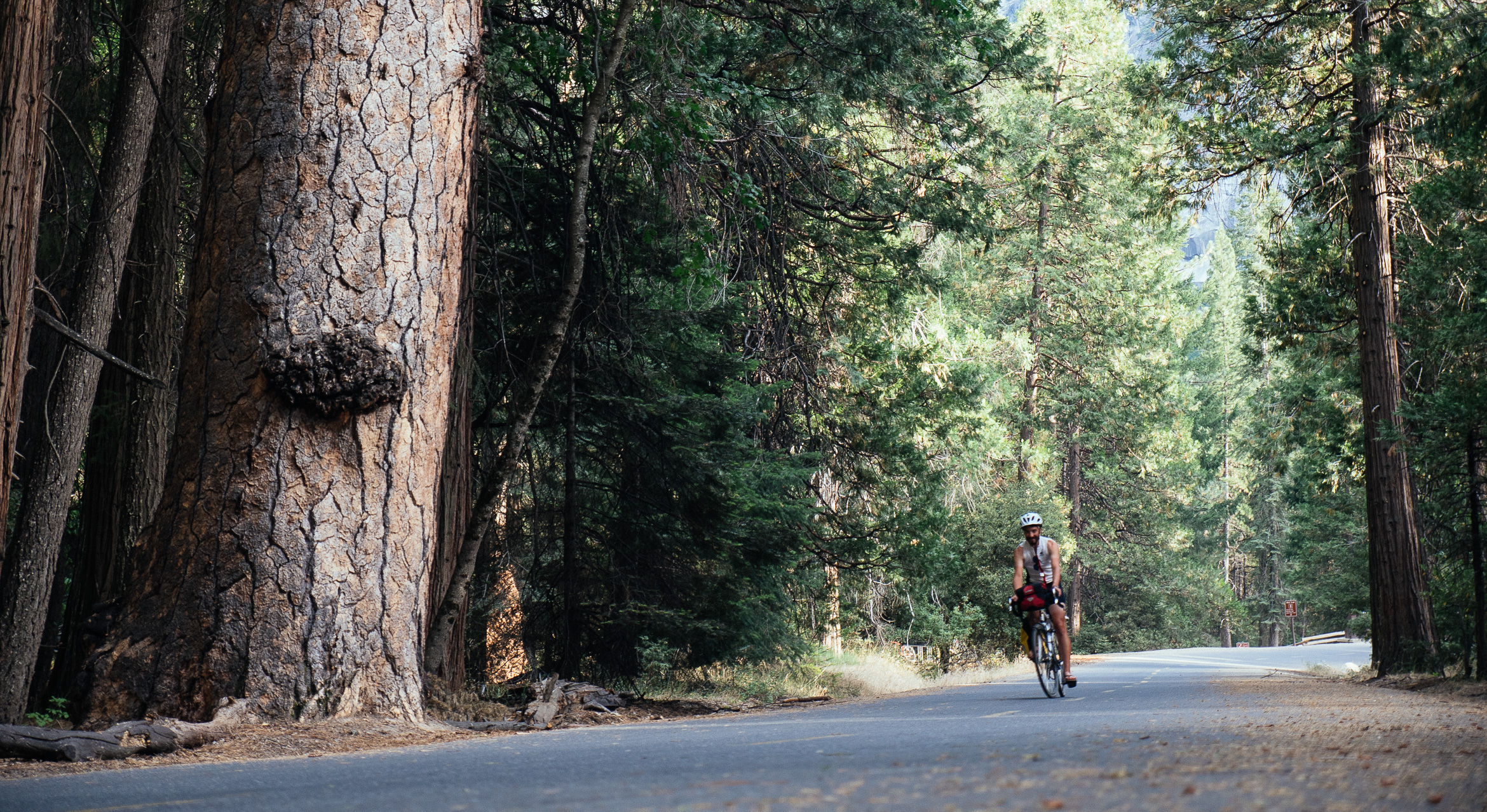
The relaxed day also meant an opportunity to catch up on some much needed blog updating. A behind the scenes look at what I do for each blog-post would include watching me laboriously rifle through the day's photos which are usually plentiful and pick out the few that are decent enough to merit a second glance. All of the photos on this trip were shot in RAW. The following segment goes into gross detail explaining what that means. The short gist is that the photos aren't done at this point.
The first step is cataloging and organization. Taking several thousand pictures means having to sift through several thousand pictures which can be a tall order. It makes sense to store photos in a logical and consistent method so that in the future you can find things quickly and easily. Some individuals do this sort of album sorting and filing virtually through programs like iPhoto, Aperture or Lightroom using their Catalog or Library interfaces. I prefer to have my files physically sorted as well. What this means is that after importing images they are put into folders named in a formulaic way. A basic example would be:
Fritz/Pictures/Panasonic GH4/2014-12-25-Christmas-Ridgefield/IMG0001.RAW
You can also set up preset renaming templates in many photo cataloging softwares to automatically name files by the date they were taken and some sequence number (eg. 20141225-Christmas-0001.RAW) so that if you were to ever dump all your files into one folder there would be no duplicate names.
Next, I look through the actual photos in my catalog software (Adobe Lightroom) and color label photos that I like enough to publish from the day. First labeling them Yellow before performing any post-processing and then Red when they are complete. This workflow is completely arbitrary and you can use any system that works easily for you.
Getting back to RAW vs JPEG. RAW is a term used for a digital photo that includes the "raw sensor output" of the camera from the time of capture. It is a minimally compressed file that has not had post-processing applied. Many different technical steps are taken in this processing but the most important for standard photographers is the fact that the RAW file contains a greater amount of dynamic range and hasn't had white balance and tint applied unlike a JPEG. Shooting RAW permits greater fine tuning of images in post. There are of course drawbacks to shooting in RAW. The files are larger (often double the size), the images appear 'flat' before post-processing and many standard applications cannot open the proprietary formats. The necessitation of fiddling, expensive software and ample storage all make RAW an unwieldy choice for most.
It's comparable to keeping film negatives vs. prints. Personally, I like the opportunity to fiddle and the added latitude in post-processing makes it a no-brainer choice. To give you an example however, the below image shows the 4 basic passes that are taken before an image is posted to the blog:
- Cropping / Alignment
-
Exposure / Curves
-
Color correction / Saturation / Vibrancy
-
Adjustment Brush / Graduated Filter
1. Cropping and Alignment are fast modifications that I make to any photo before doing anything else. Because the photos are being edited to post on a blog they need to be easily viewed by mobile and desktop users. A tablet or phone can be rotated into a portrait orientation (taller than wide) but no one wants to flip their laptop on its side to look at an image. Therefore, as you have likely noticed, the images posted tend towards a widescreen aspect ratio, which is accomplished by cropping height from the image. This way, written content is not pushed off the top and bottom of the page entirely when viewing a photo.
FLAT UNCROPPED RAW (original file)
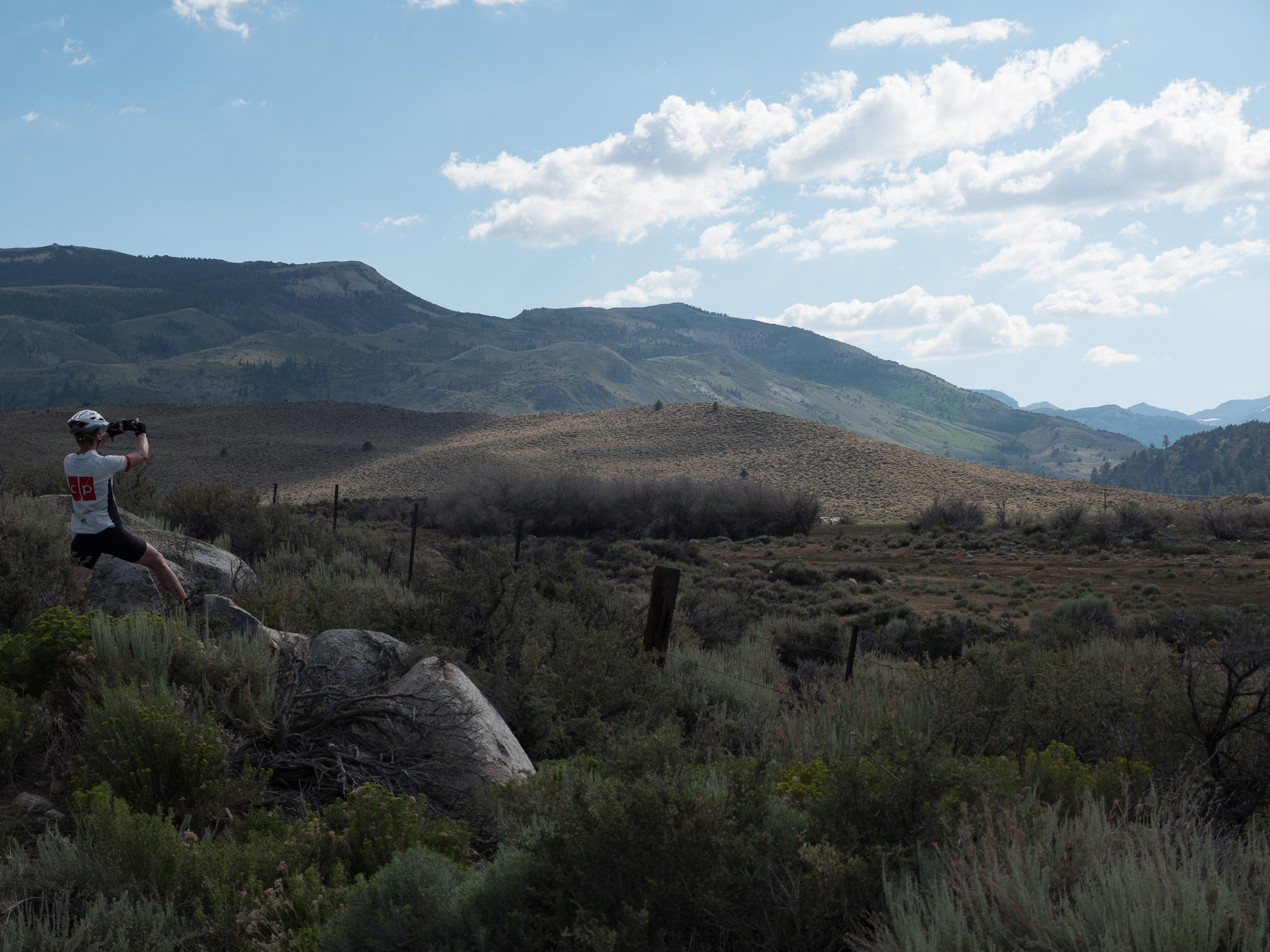
Next I correct any major problems with alignment . Snapping a photo of someone biking behind you, without looking, can be a difficult prospect and often results in an unintended dutch angle . I will rotate an image so that the horizon is more in line with reality.
CROPPED
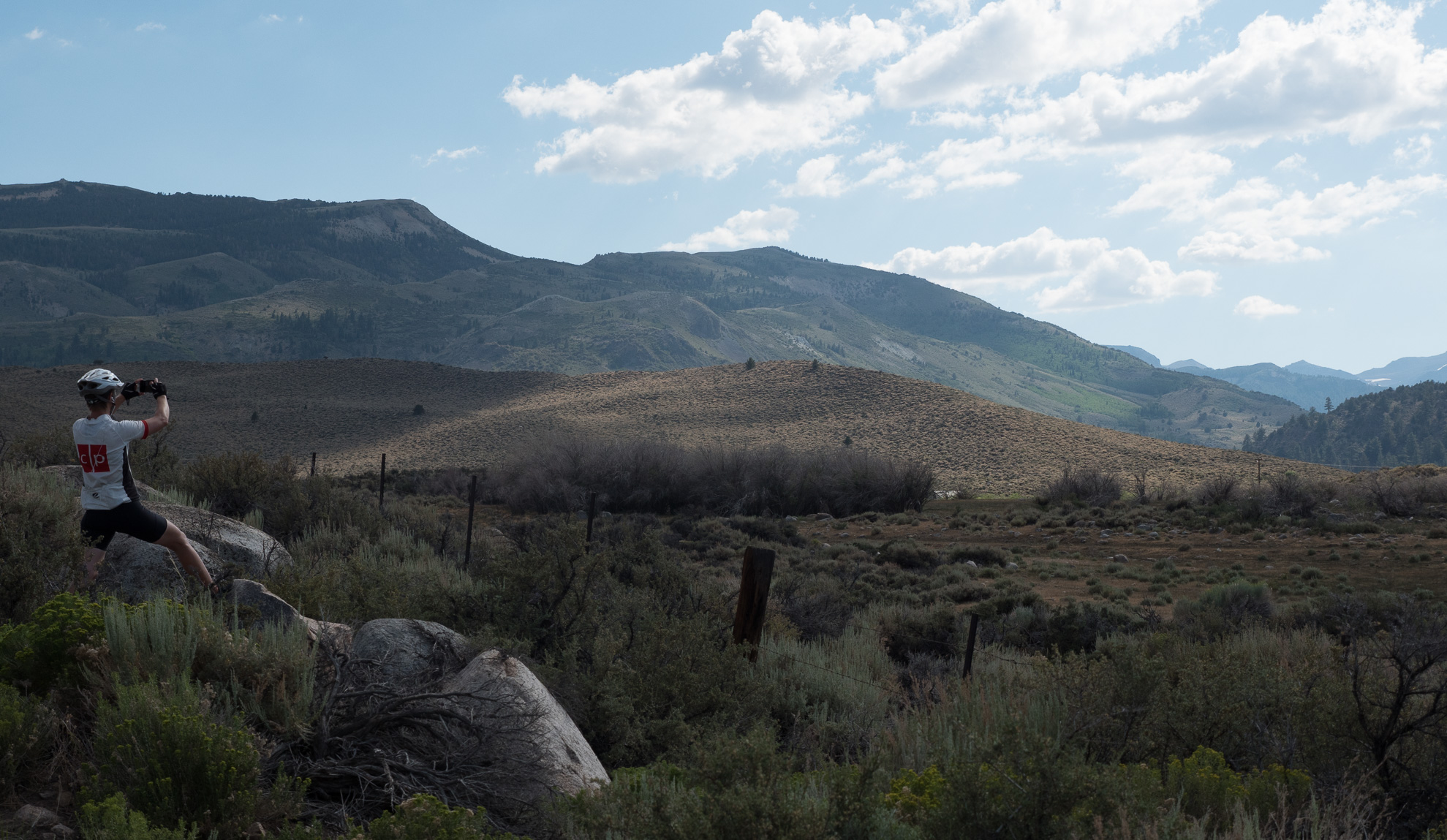
2. When taking a photo either in manual or auto mode you may determine after the fact that the scene wasn't exposed optimally. Whether this means that your shadows were crushed or your highlights blown out, you make small adjustments to bring the scene closer to an optimal exposure . This means adjusting the global exposure (total luminance of the frame) and individual parts of the histogram, Highlights, Whites, Shadows and Blacks .
EXPOSURE CORRECTED
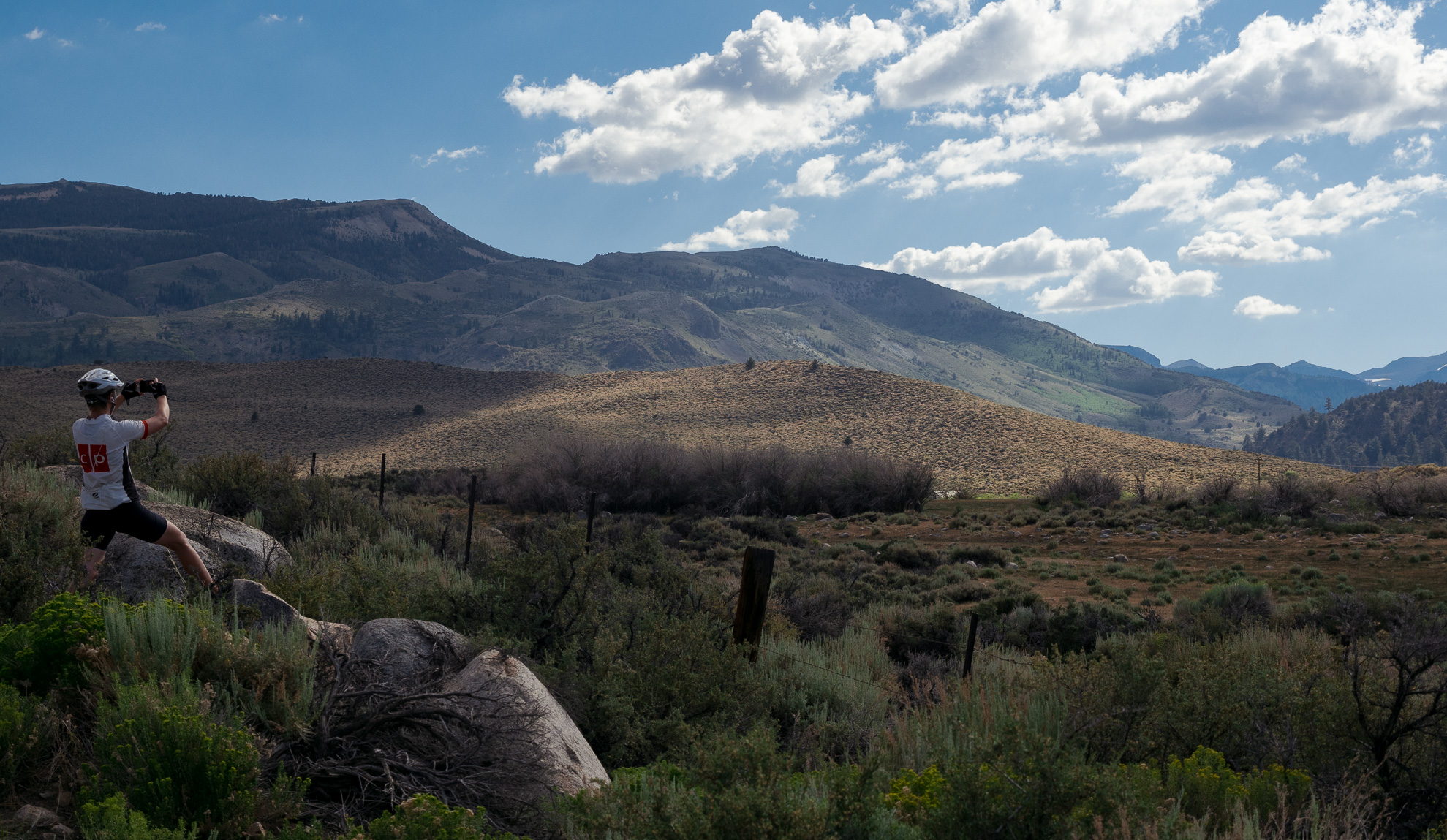
3. Next I will attempt to replicate the color of the scene as best as possible, tuning the flat image to reflect what I remember seeing when I took the picture. Restoring saturation and adjusting the coolness/warmth of the image are typical steps.
COLOR CORRECTED VIA HUE/SATURATION/LUMINANCE & SKY RECOVERED
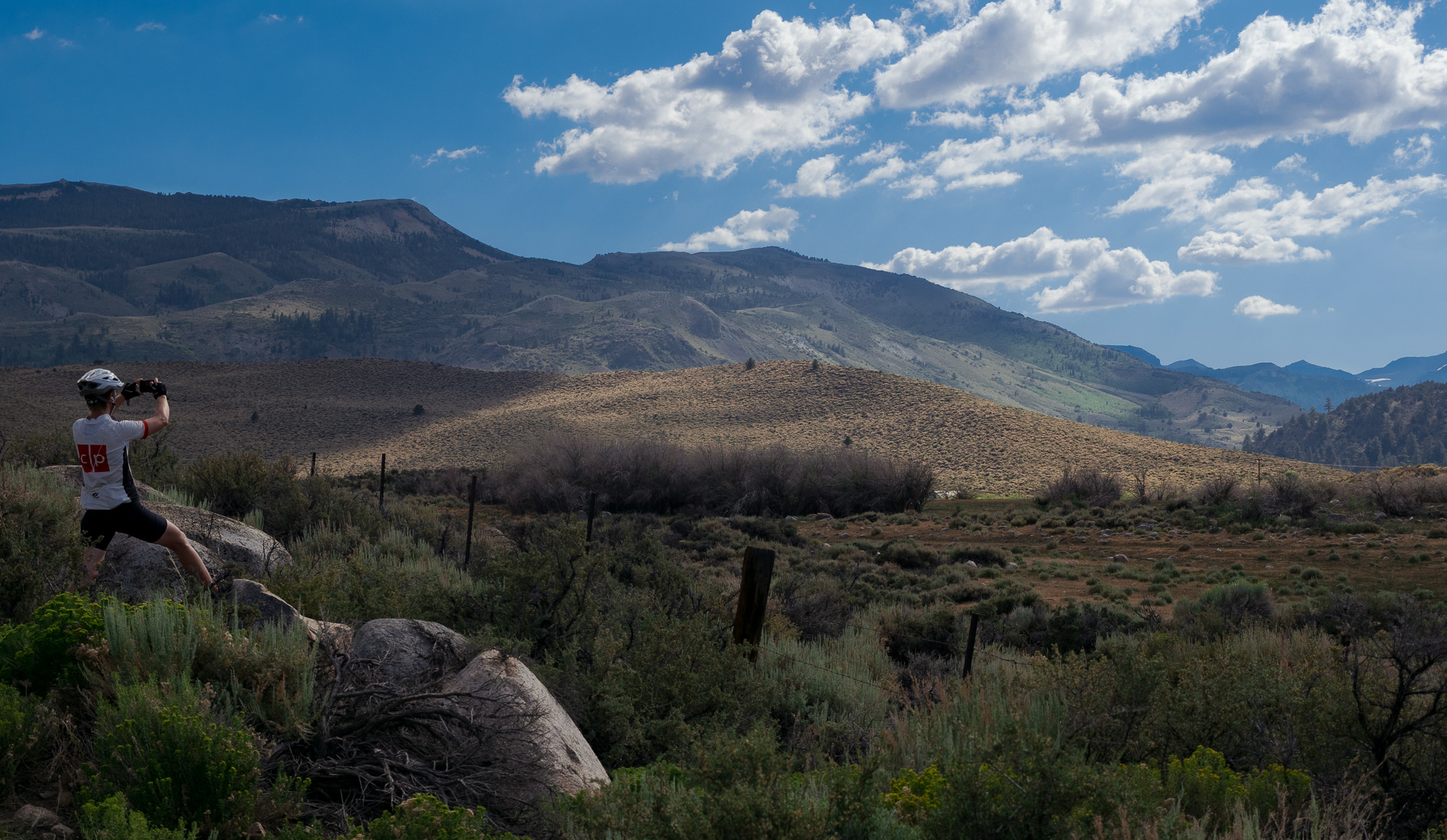
4. Lastly, I will make small or isolated modifications to certain elements in the frame. The human eye has a tremendous capacity for dynamic range and outclasses modern digital cameras (theoretical 24 f-stops vs 10-14). This takes into account the eye's ability to seamlessly adapt to luminance variation (via pupil diameter) as our eye saccades around the scene. An example of this is recovering over-exposed skies via Graduated Filters or using the adjustment brush to lift exposure on a subject that's too dark relative to their surroundings. We could also adjust the color temperature of individual elements if say, two different light sources were present (setting sun and camera flash).
SUBJECT BRIGHTENED TO ADEQUATE EXPOSURE (final image)
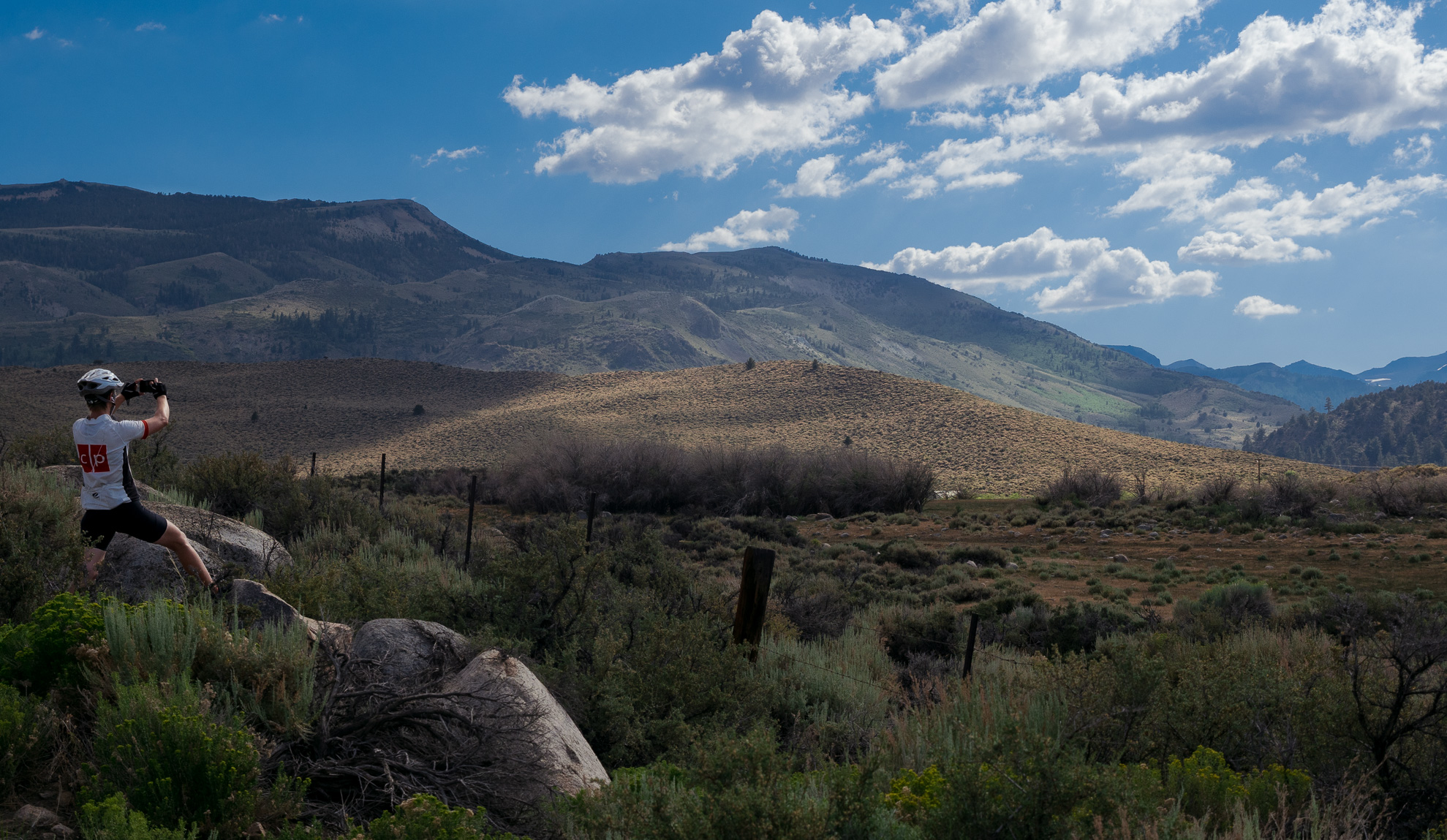
It is important to keep in mind that nearly every image we see on the internet, in a magazine, even the movies that we watch at a theater, have gone through a similar if not more exhaustive post-production process. What we afford ourselves working in the RAW space versus with JPEG's is the flexibility to determine more precisely, the outcome of the final image rather than leaving it up to the camera's built-in JPEG engine.
Gen patiently sat and entertained herself as I went through each of these steps plus the longwinded writing that accompanied each picture before suggesting we see the park. I agreed it was a capital idea and we left the lodge in order to go swimming in the river. Having never put on pants earlier in the day (because boxer briefs look enough like bike shorts) I was ready to jump in the water at a moment's notice and we parked bikes and waded into the cool water.
I immediately set about stacking submerged rocks in an effort to recreate my previous cairn effort. Gen soaked her legs in attempt to rejuvenate the pedal-weary muscles. Shortly after beginning our swim, rumbling could be heard. Looking across the valley towards Half Dome, tall dark slate colored clouds collected with speed and began to head our way. We congratulated ourselves on the laziness of not pursuing a big hike that day and watched the storm soak the granite walls. Other visitors continued lounging in the water as the lightning and thunder neared, growing steadily more intense. Gen and I decided that we would be better suited not swimming during a storm and headed back to the lodge.
Sitting in air conditioning a short while longer we watched as the storm passed before reemerging from shelter to continue sightseeing. A day of taking it easy was a delightful departure from the daily cycling and we took in the natural beauty of the park as much as we could. We biked down the hiking path and up to Mirror Lake which was more like Mirror Puddle owing to the drought conditions which have plagued California for the past 3 years. Continuing through the park, we stopped wherever a roadside sight caught our eye.
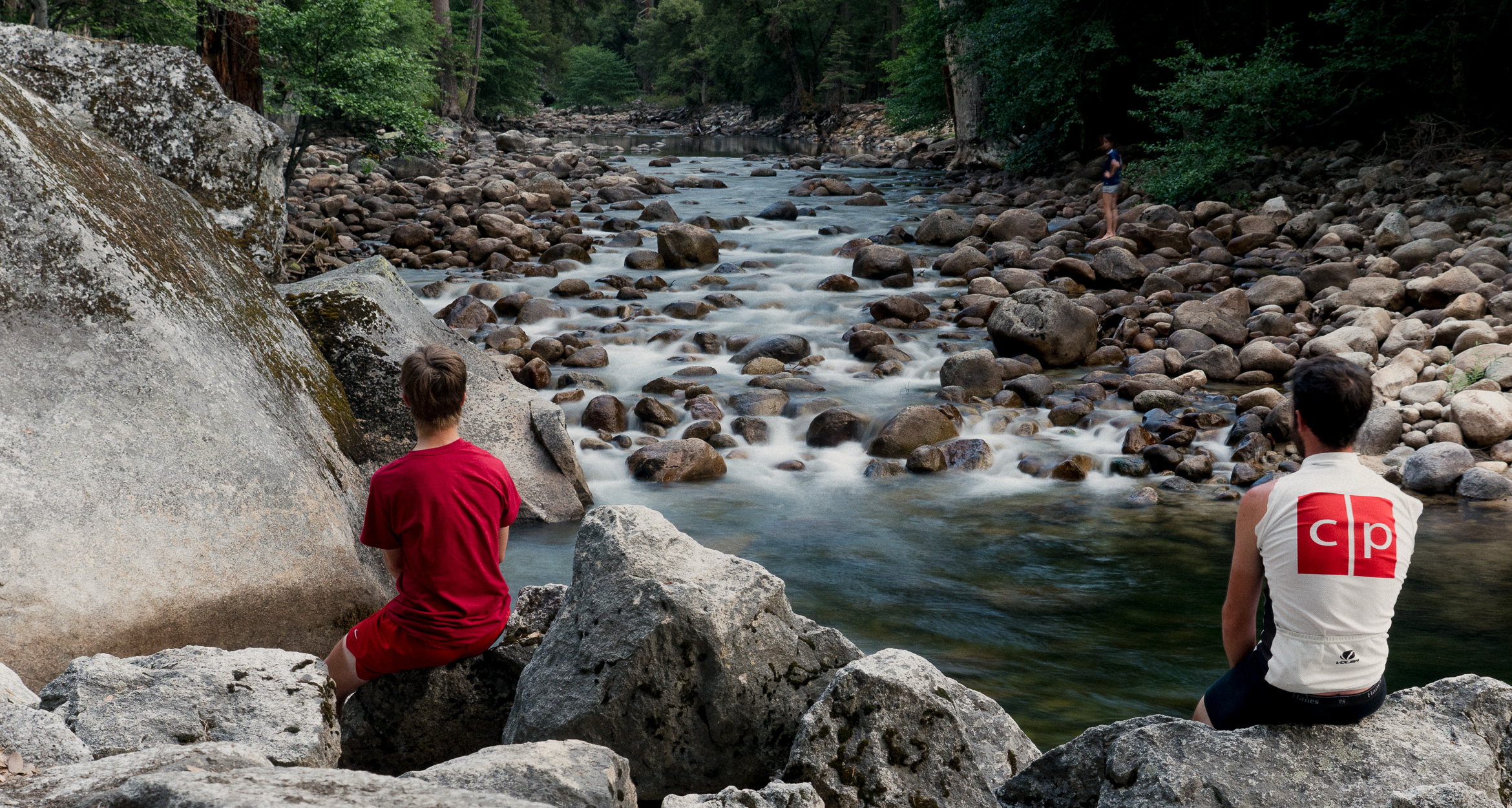
After eating dinner we biked out to the El Capitan Meadows in hopes to catch a glimpse of headlamps crawling up the massive face. Staring up into the darkness, we struggled to find evidence of any nocturnal activity. Likely, owing to the intense afternoon heat or powerful thunderstorms the wall stood in lifeless repose. I had been excited to shout monkey calls up to climbers on the face and was disappointed that Gen would miss the experience.
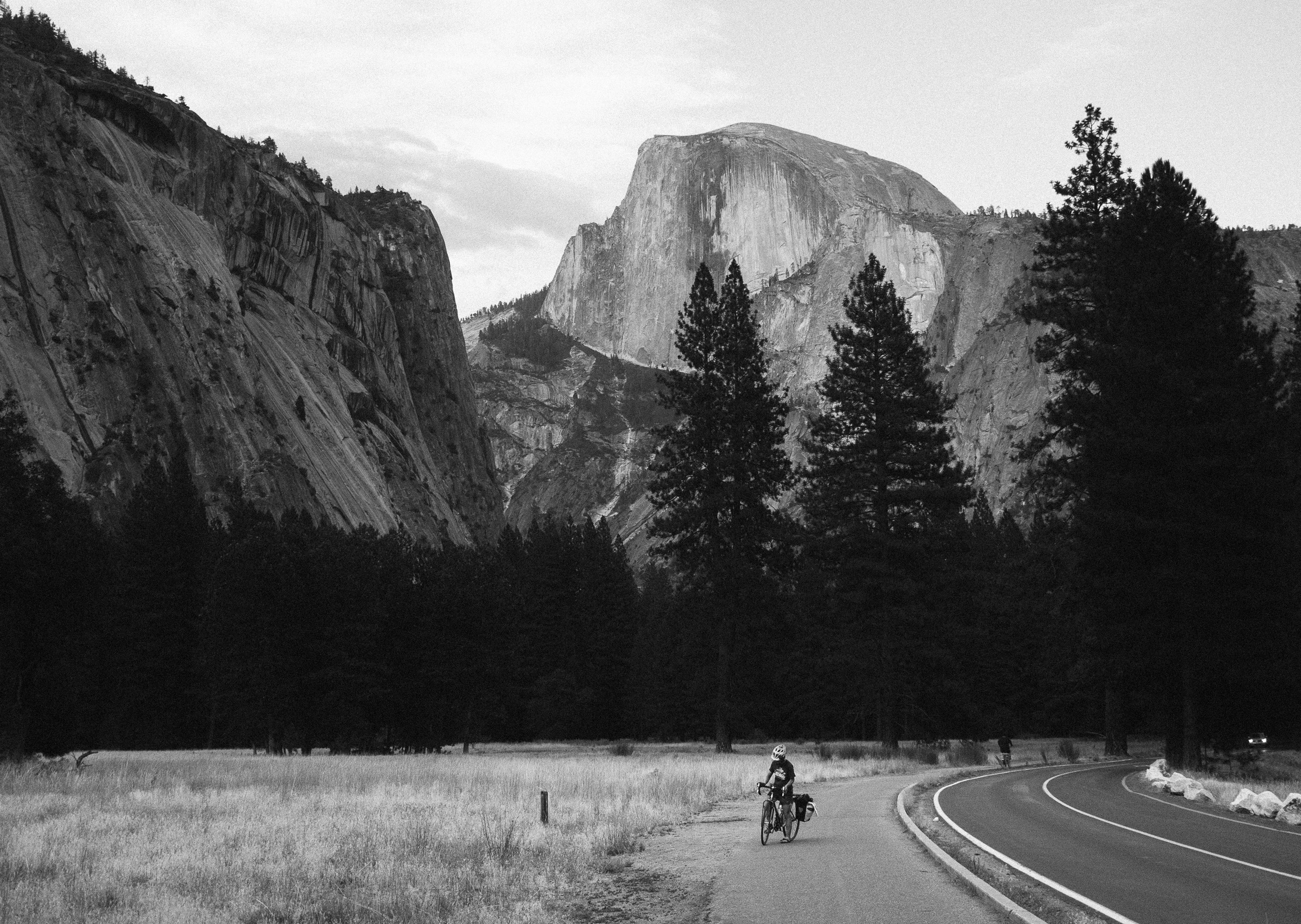
We returned to camp deflated from the failed attempt. Crawling inside our tent we knew the sooner we slept the happier we would be with the long day ahead. Unfortunately, the group of Irish college freshman in the adjacent site had not grown weary of their makeshift acoustic karaoke session and continued belting out pop-hits with lackluster proficiency. Gen groaned that sleep would be hard won with the off-key stylings of Katy Perry impersonation and I agreed that it was irritating that the group neglected to observe the posted quiet hours. While not a fan of confrontation, I felt it was better lying restlessly for the indeterminate future and wrestled free of our tent to politely ask them to can it. With the noise abated we settled in to sleep.
The hot valley had not cooled considerably when the sun set and the tent flaps were left dangling unzipped. A wildlife ranger walked past nearby campsites and could be heard warning campers who were still awake to secure their food stores before sleep.
"There are 5 bears around the camp currently which will likely come through looking for food in the night, make sure your bear box is securely closed."
Gen expressed concern, having been nervous regarding the threat of bears throughout the trip. I assured her that we were fine and told her that the bears wanted granola bars not her filthy camp-soiled body. With friendly banter back and forth I assured her that it was fine and we needn't worry.
At around 1 in the morning I woke to the sound of the zipper for the main flap and vestibule flaps being closed.
What are you doing?
Closing the flaps, it was buggy.
There haven't been any mosquitoes all night? It's not buggy.
I am just making sure.
No you're not; you're closing it because of bears! The bears don't want to eat you and if they did, a 1mm thin sheet of nylon wouldn't stop them!
I don't want to wake up with a bear sniffing my head.
You're crazy! It's too hot, you've gotta leave the tent open.
The ranger said they were surrounding the camp
You're in Yosemite, being in the park means you're surrounded by bears, they tell you to put food away, not to zip up your tent, we're fine go to sleep.
Our back and forth eventually ended, Gen less than convinced but chastened into silence. We slept through the night our last day of considerable climbing awaited as we reclaimed the elevation we lost descending into the valley.